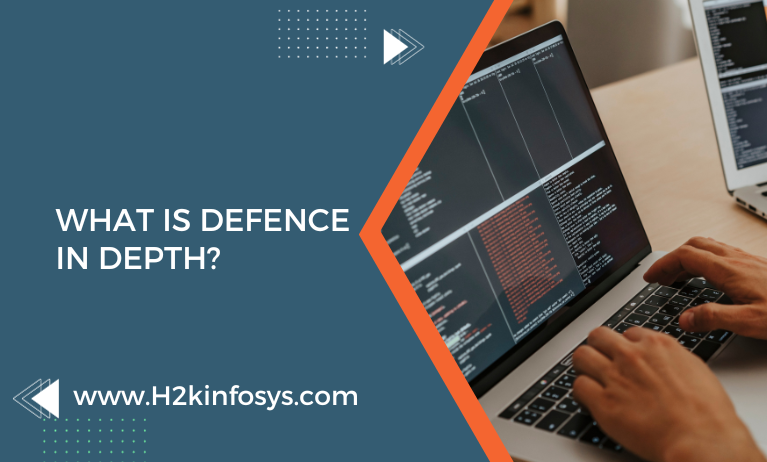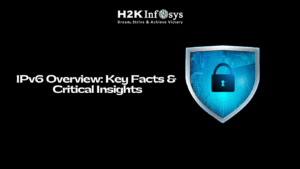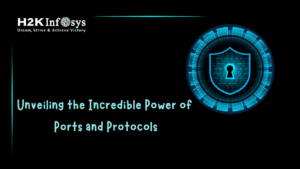According to the defence-in-depth principle, a company shouldn’t rely on a single line of defence to keep it safe from potential dangers. A single line of defence has the drawback of leaving the organisation open to attack if it fails.
With defence in depth, the company will build several layers of defence all over the place. In this manner, the likelihood that an attacker will be stopped or detected if they manage to get past one tier of security is increased. To learn more, check out the Cyber security online training.
How Defence in Depth Works?
Companies now face more varied and advanced cyberthreats than ever before as the landscape of cyberthreats is continually changing. Traditional cybersecurity tactics that were centred on securing the perimeter have become ineffective as a result. Attackers frequently operate inside the perimeter, or important company resources, such cloud computing, are located outside of it.
To secure the organisation against potential threats, defence in depth entails constructing numerous lines of . This can entail actions like network segmentation, but it also has to include various security technologies. For instance, endpoint security tools like antimalware, endpoint protection platforms (EPP), and endpoint detection and response (EDR) can supplement network-level protections against malware.
An organisation should be able to recognize and prevent attempted assaults at the network level before they affect an organisation’s devices. Defence in depth, on the other hand, gives the capability to identify and stop an ongoing attack that has evaded an organisation’s defences.
Defence-in-Depth Strategies
Defence in depth is a strategy that businesses can use throughout their IT environments. The following are some illustrations of defence-in-depth tactics that can be used to counter various threats.
Account Security
An organisation is frequently threatened by account takeover assaults, which pose the danger that an attacker will take control of a valid user’s account and all of the accompanying permissions. A defence in-depth approach to account security would look something like this:
- Password Security: Passwords are frequently used as an authentication method, therefore making them strong, distinct, and complex makes them more challenging to crack.
- Multi-Factor Authentication (MFA): MFA makes it more difficult for an attacker to use a compromised password by requiring multiple factors to authenticate to an account.
- Least Privilege: According to the idea of least privilege, a user, system, application, etc., should only have the access and permissions required to perform its function. Least privilege implementation restricts the harm that an attacker can cause with a compromised account.
- Behavioural monitoring: By observing a user’s behaviour, a company can identify potentially harmful, malicious, or suspicious behaviour. The business can then prevent these acts and start the incident response process.
Data Security
The most valuable asset for most businesses is data. The following measures could be part of a defence in depth strategy for data security:
- Encryption: A crucial data security measure is encryption. Data that has been encrypted makes it more difficult for unauthorised individuals to access it or misuse it since accessing it requires the proper encryption keys.
- Access Controls: Access controls are a tool for controlling who has access to applications, data, and systems. Least privilege access rules are put in place to stop people from accessing data without permission.
- Data loss prevention (DLP): DLP solutions are made to stop sensitive information from leaving the company. This makes sure that authorised users aren’t endangering confidential company and consumer information.
- Backup and Recovery: Data loss or theft is one risk, but there is also the risk of loss or encryption by malware. Backup and recovery systems help the organisation quickly recover from business-disrupting events.
Endpoint Security
Malware and other risks may target corporate devices. A defence in depth approach to endpoint security includes the following components:
- Intrusion Detection and Prevention System (IDPS): An IDPS can detect and prevent malicious content before it reaches a user’s device if it is installed at the network or endpoint level.
- Antivirus (AV) software: Software called antivirus (AV) detects and prevents known malware types from accessing a device by using signatures.
- Endpoint Protection Platform (EPP): EPP offers more advanced security by leveraging machine learning and threat intelligence to detect and stop malware attacks.
- EDR (Endpoint Detection and Response): EDR aids incident responders in their attempts to remove malware that has infected corporate devices.
Network Security
Organisational protection from both internal and external threats is provided by network security. Defence in depth strategies that can be applied to the network include:
- Firewall: A firewall creates a network border and makes it possible to check all incoming and outgoing traffic on a business network. Inbound threats can be stopped by firewalls, and they can also stop sensitive data from leaving the network.
- Virtual Private Networks (VPNs): A VPN or comparable secure remote access solution enables an organisation to control and monitor remote access to business applications and systems while giving remote users encrypted access to corporate networks.
- Secure Gateway: A secure gateway guards and keeps track of all traffic leaving the secure network for the cloud and the Internet. As a result, harmful content cannot enter the system through malware or dangerous websites.
- Network Segmentation: Network segmentation divides the business network into sections according to use and level of classification. The organisation can identify and stop an adversary’s attempted lateral movement inside the network perimeter by inspecting cross-segment traffic.
Conclusion
Defence in depth calls for a variety of security measures as well as the capacity to efficiently monitor and manage them all. Check out the online cyber security training to learn more.





























